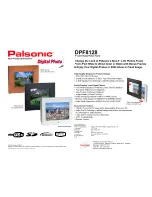
33
Tutorial—Digital V
ari-Pr
ograms
Close up
Use for close-up shots of fl owers, insects, and other small
objects in which main subject stands out clearly. Reds and
greens are captured particularly vividly.
• Camera automatically selects center focus area. Focus area
selection can be changed.
• Tripod, self-timer (
105) and/or optional ML-L3 remote control (
107)
or MC-DC1 remote cord (
191) can be used to prevent blurring at slow
shutter speeds.
• Micro lens recommended. Effective use can be made of other lenses by
focusing at minimum focus distance. With zoom lenses, zoom in to make
subject appear larger.
• Flash set to front-curtain sync. Other modes can be selected (
96).
Night landscape
Slow shutter speeds produce stunning night landscapes
while minimizing mottling and discoloration often seen in
low-light photographs.
• Tripod, self-timer (
105), and / or optional ML-L3 remote
control (
107) or MC-DC1 remote cord (
191) can be used to prevent
blurring at slow shutter speeds. At speeds slower than 1 s, use noise re-
duction to reduce mottling (
133).
• Use
mode for portraits that include night scenery.
• Built-in Speedlight and AF-assist illuminator turn off automatically and will
not fi re even when lighting is poor.
Sports
High shutter speeds freeze motion for dynamic sports shots
in which main subject stands out clearly.
• Camera focus continuously while shutter-release button is
pressed halfway, following movement of subject through
focus areas. Note that shutter can be released even when camera is not
in focus; check focus indicator (
●
) in viewfi nder before shooting.
• Use telephoto lens for best results. Tripod recommended to prevent blur-
ring when telephoto lens is used.
• Built-in Speedlight and AF-assist illuminator turn off automatically and will
not fi re even when lighting is poor.
















































